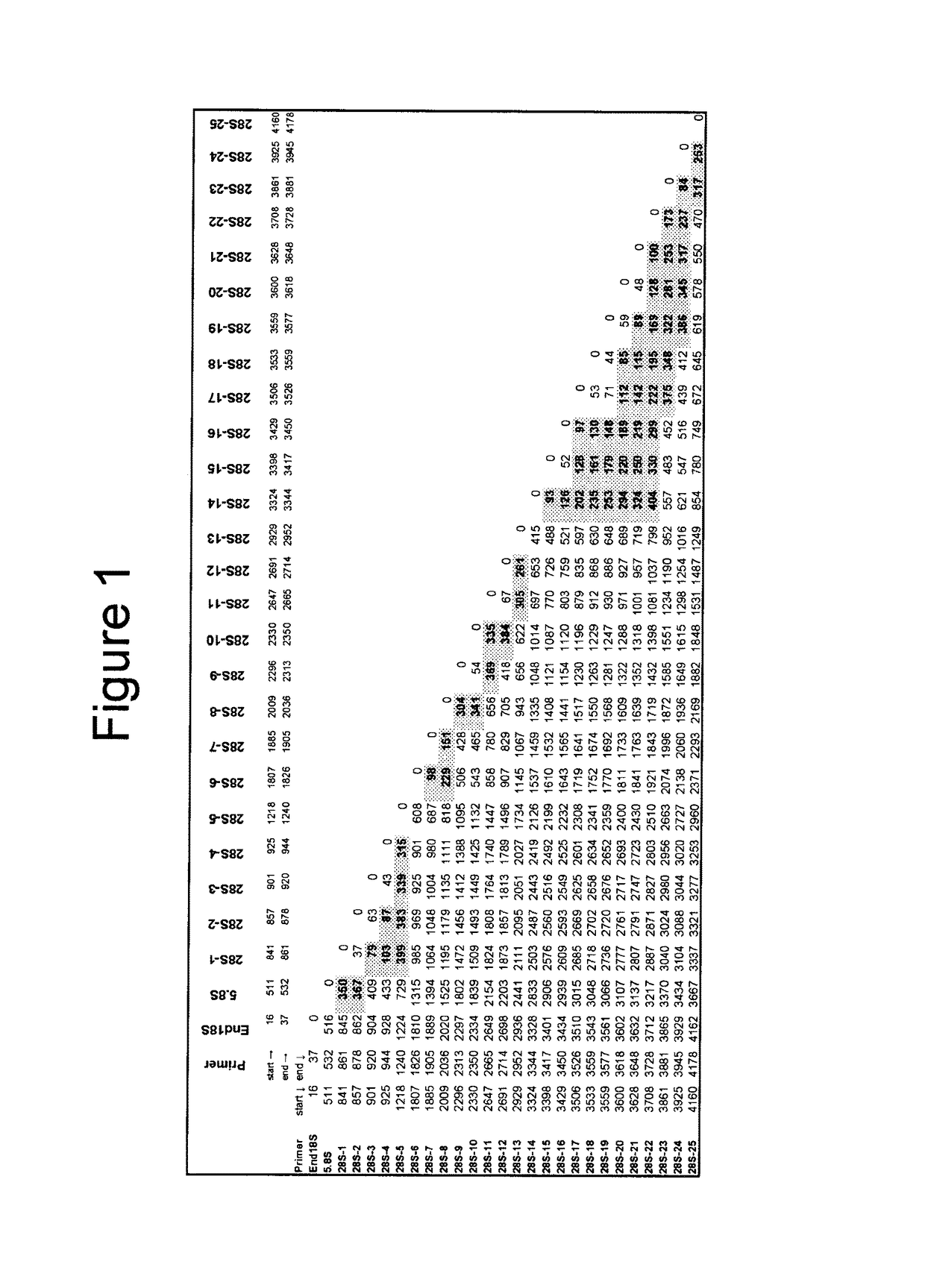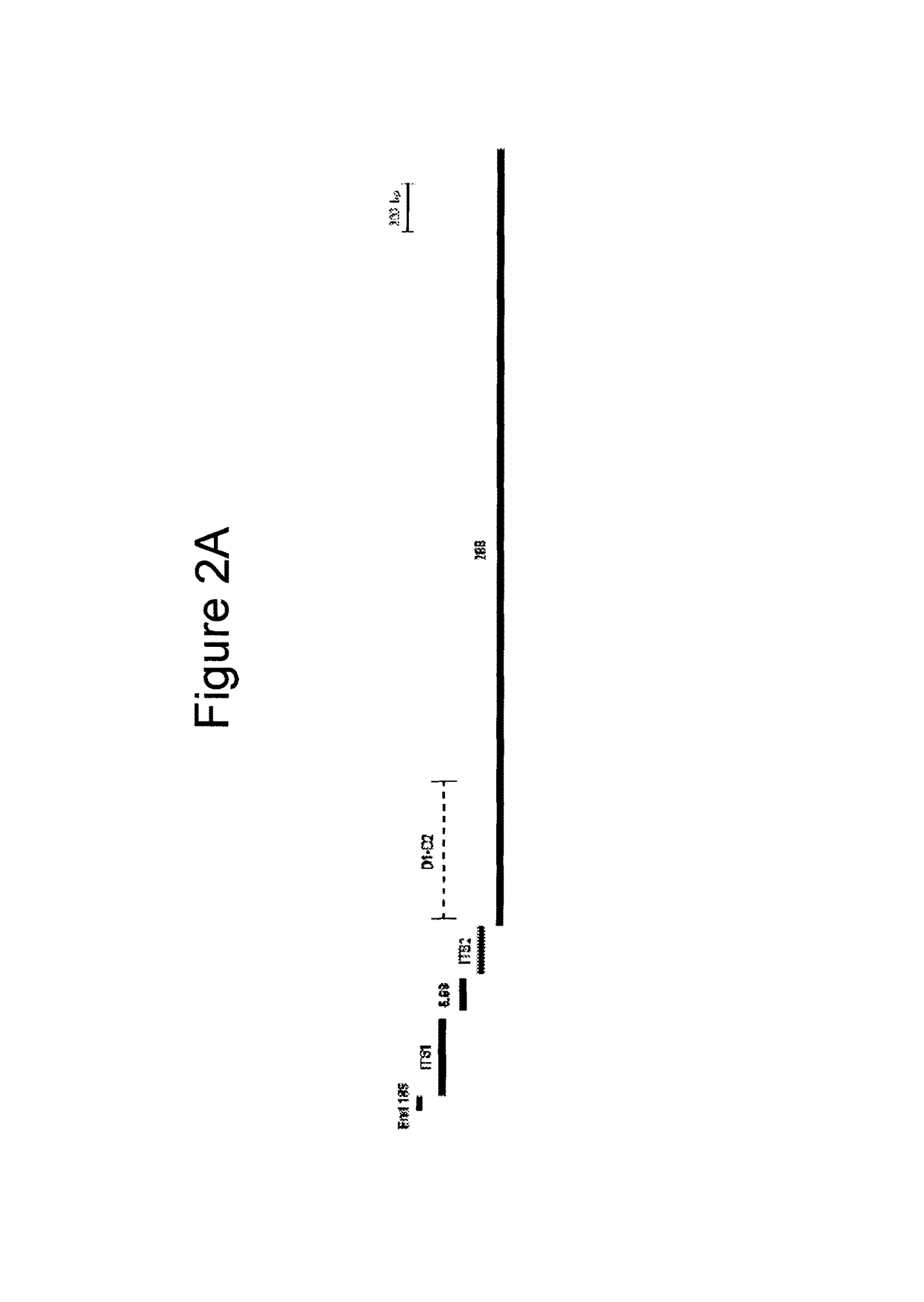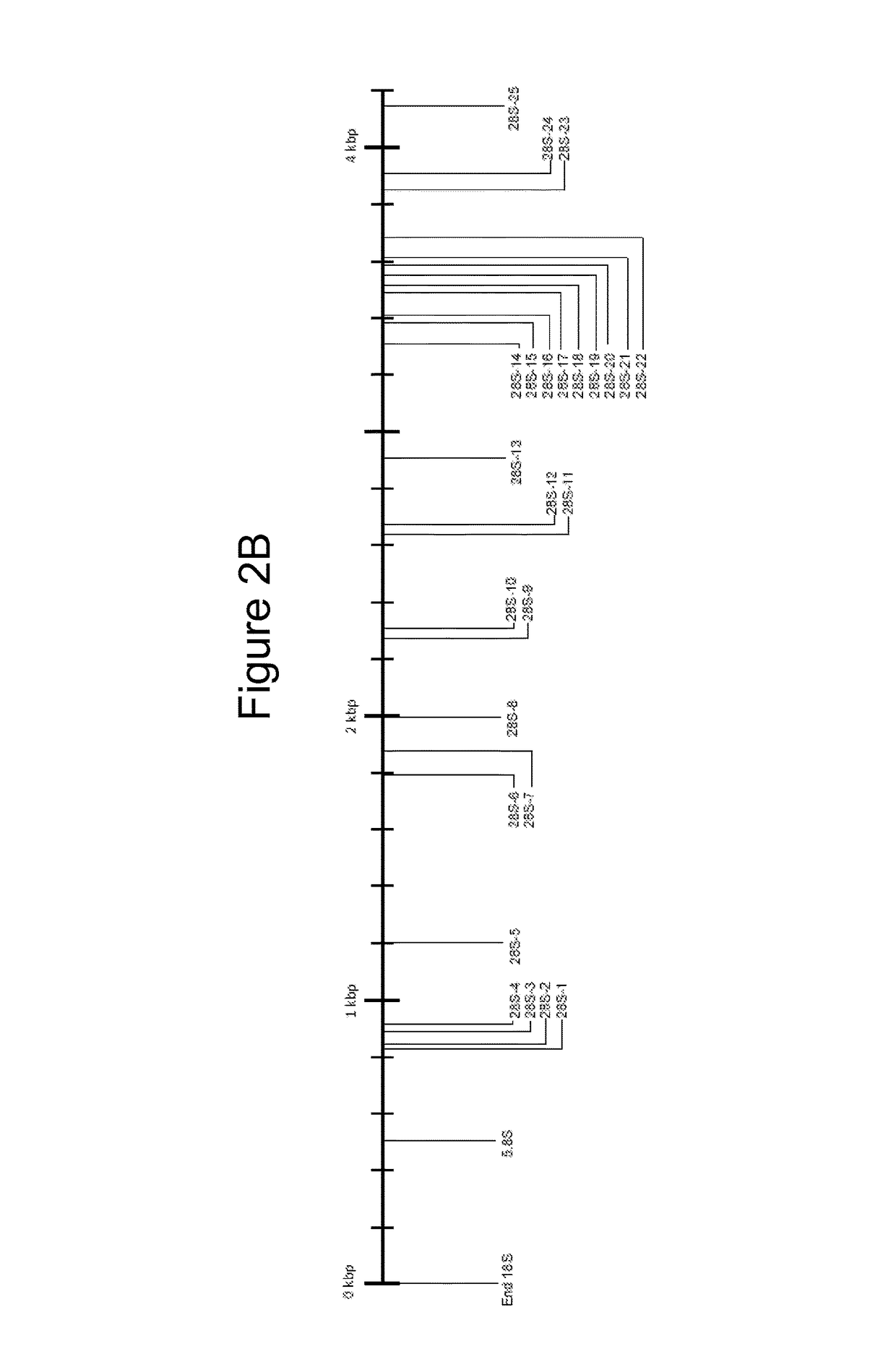Broad range PCR-based compositions and methods for the detection and identification of fungal pathogens
a composition and broad-range technology, applied in the field of fungal pathogen detection and/or identifying a patient sample, can solve the problems of critical limitations of the primer and the approach, the sensitivity of cultivation and histological analysis is often poor, and the infection of immunocompromised patients is a major cause of morbidity and mortality
- Summary
- Abstract
- Description
- Claims
- Application Information
AI Technical Summary
Benefits of technology
Problems solved by technology
Method used
Image
Examples
example 1
Materials and Methods used in Examples 2-6
[0188]This Example discloses the materials and methods used in Examples 2 through 6 of the present disclosure.
[0189]Microorganisms
[0190]Table 1 lists 9 clinically or phylogenetically relevant fungal pathogens subjected to sequencing of their ITS, 5.8S, and 28S rRNA genes. Table 2 lists 43 fungi of which the same gene sequences were obtained from publicly available genomic databases or GenBank®. Genomic DNA of the following organisms was used for analytical sensitivity testing to screen broad-range fungal primers: Aspergillus candidus (ATCC # 20022), Aspergillus flavus (ATCC # MYA-3631), Aspergillus fumigatus (ATCC # MYA-1163), Aspergillus oryzae (ATCC # 20719), Aspergillus terreus (ATCC # 10070), Aspergillus ustus (ATCC # 20063), Candida albicans (ATCC # 90028), Candida dubliniensis (ATCC # MYA-580), Candida glabrata (ATCC # 90876), Candida guilliermondii (ATCC # 90877), Candida kefyr (ATCC # 28838), Candida krusei (clinical isolate), Candid...
example 2
Generation of New Fungal Ribosomal rRNA Gene Sequences
[0212]This Example discloses novel sequences of fungal rRNA genes of phylogenetically and clinically relevant fungal species.
[0213]Sequence information for several medically important fungi is not available in public databases, limiting one's ability to design broad range fungal PCR assays. To address this limitation, rRNA genes from 9 phylogenetically and clinically relevant fungal species were sequenced. Seven (7) of these fungal species were missing rRNA sequences from the 3′ end of 18S rRNA gene to the 3′ end of 28S rRNA gene. Table 1, shown in Example 1, above, lists these organisms with their American Type Culture Collection (ATCC) numbers, GenBank® accession numbers for sequences deposited from this study, and their sequence lengths. The full-length sequences of these organisms are shown in FIGS. 8-16. In some cases, the sequences disclosed herein may be up to 90 by short of the true end of the 28S rRNA gene since a conser...
example 3
Selection of Broad Range Fungal rRNA Gene Primers
[0214]This Example discloses primer sequences for PCR-based amplification of the fungal rRNA operon of 50 unique fungal species and the method used to design these primer sequences.
[0215]A multiple sequence alignment was created using the 52 fungal rRNA gene sequences presented in Tables 1 and 2, which represent 30 genera. The phylogenetic position of these fungi based on the alignment was used to further verify the identity of the fungal sequences. Twenty seven (27) broad-range fungal primers (Tables 3 and 4) were designed by manually reviewing the alignment to select areas of sequence conservation among fungi that had multiple nucleotide differences with the human rRNA operon. Table 3 lists the forward orientation of the primer sequences (SEQ ID NOs: 1-27) and Table 4 lists the reverse complement of the primer sequences (SEQ ID NOs: 28-54), shown in Table 3. Ten (10) primers, including End18S Forward and Reverse (SEQ ID NOs: 1 and 2...
PUM
| Property | Measurement | Unit |
|---|---|---|
| volume | aaaaa | aaaaa |
| temperature | aaaaa | aaaaa |
| temperature | aaaaa | aaaaa |
Abstract
Description
Claims
Application Information
 Login to View More
Login to View More - R&D
- Intellectual Property
- Life Sciences
- Materials
- Tech Scout
- Unparalleled Data Quality
- Higher Quality Content
- 60% Fewer Hallucinations
Browse by: Latest US Patents, China's latest patents, Technical Efficacy Thesaurus, Application Domain, Technology Topic, Popular Technical Reports.
© 2025 PatSnap. All rights reserved.Legal|Privacy policy|Modern Slavery Act Transparency Statement|Sitemap|About US| Contact US: help@patsnap.com



